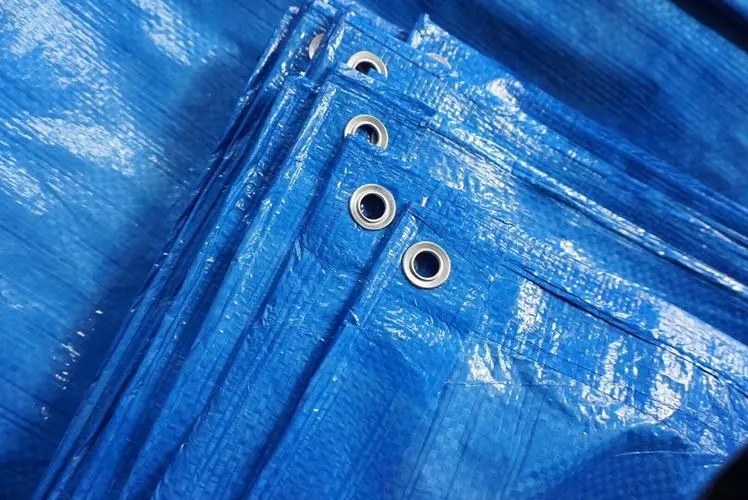Extreme weather conditions pose significant challenges for truck drivers. Rain, snow, and wind can damage cargo if not properly secured. Using a tarpaulin truck effectively in such conditions is crucial. In this article, we will explore how to ensure your cargo remains safe. We’ll focus on choosing the best truck tarpaulin and how to utilize it during harsh weather. After you read this, and if you need the products, you can consider the FeiCheng TongFa.
I. Understanding the Importance of Tarpaulins
Truck tarpaulins serve multiple purposes. They shield cargo from adverse weather. Additionally, they prevent theft and debris from affecting the load. The tarpaulin of truck is an essential accessory for every driver. Without it, the cargo is exposed to the elements, especially during extreme weather.
II. Choosing the Best Truck Tarpaulin
Selecting the best truck tarpaulin depends on the weather. For heavy rain, choose a waterproof tarpaulin. It will keep your cargo dry and safe. If you’re facing strong winds, select a heavy-duty tarpaulin. This ensures the cover stays in place.
Moreover, durability is key when choosing a tarpaulin of truck. Ensure it is tear-resistant. Torn tarpaulins can expose cargo to harsh conditions. You should also consider the size of your truck and load. The best truck tarpaulin will fully cover your cargo, providing total protection.
III. Using Tarpaulins in Rainy Conditions
Rain can cause severe damage to unprotected cargo. Therefore, it’s crucial to secure the tarpaulin of truck tightly. Make sure there are no gaps. Water can seep through small openings. This can lead to cargo damage or even mold growth.
Another tip is to use a slanted setup. A sloped tarpaulin allows water to run off easily. By doing this, you prevent water pooling on top of the cover. Always check for leaks regularly. If the best truck tarpaulin is in use, it will remain waterproof throughout your journey.
IV. Protecting Cargo in Snowy Weather
Snow adds extra weight on the tarpaulin. This can lead to tearing if the material is weak. Use a reinforced tarpaulin of truck for snowy conditions. It will handle the additional load of snow.
Furthermore, brush off snow regularly. This reduces pressure on the tarpaulin. Cold weather can make tarpaulins stiff. Ensure your best truck tarpaulin remains flexible in freezing temperatures. Some materials become brittle in cold climates, so choose wisely.
Additionally, avoid parking under trees during snowstorms. Falling branches can puncture the tarpaulin. Keep the tarpaulin of truck taut, ensuring that snow slides off smoothly.
V. Securing Tarpaulins in Windy Conditions
Strong winds can easily lift a loose tarpaulin. It’s essential to fasten the best truck tarpaulin securely. Use strong ropes or bungee cords to hold it down. You should also attach the tarpaulin at multiple points. This helps distribute wind pressure evenly.
Always position your truck facing the wind. This minimizes the direct impact of gusts. In windy conditions, a loose tarpaulin of truck is a liability. The wind can cause it to flap or tear, leaving the cargo exposed.
Additionally, check the edges of the tarpaulin. Ensure they are not flapping in the wind. Flapping edges can weaken the material over time. The best truck tarpaulin will stay firm even in harsh winds.

VI. Dealing with Hailstorms
Hail can cause severe damage to both the truck and cargo. A tarpaulin of truck can offer some protection, but it must be durable. Choose a thicker tarpaulin for such conditions. It will absorb the impact of hailstones more effectively.
During a hailstorm, find a sheltered location. This reduces the direct impact on the tarpaulin. If possible, avoid driving during a hailstorm. The best truck tarpaulin can only do so much. Sheltering your vehicle will minimize damage to the cargo.
VII. Maintenance Tips for Tarpaulins
Proper maintenance extends the lifespan of the tarpaulin of truck. After each trip, clean the tarpaulin thoroughly. Dirt and debris can weaken the material over time. Ensure it is completely dry before storing it. A wet tarpaulin can develop mold or mildew.
Inspect your tarpaulin regularly. Look for any signs of wear and tear. Small rips can quickly worsen, especially during extreme weather. The best truck tarpaulin should remain intact and functional for years with proper care.
Moreover, store your tarpaulin in a cool, dry place. Avoid exposing it to direct sunlight for extended periods. UV rays can weaken the material. For long-term durability, always follow the manufacturer’s instructions.
VIII. How to Choose the Best Truck Tarpaulin Material
The material of the tarpaulin significantly impacts its performance. PVC tarpaulins are waterproof and UV-resistant. They are ideal for protecting cargo in both rainy and sunny conditions. Canvas tarpaulins offer breathability, making them suitable for delicate loads. However, they are not completely waterproof. The best truck tarpaulin for extreme weather should be strong, durable, and suitable for your specific needs.
When selecting a material, consider the climate you’ll be driving in. PVC is ideal for wet environments, while canvas is better for dry, windy conditions. The tarpaulin of truck should be tailored to withstand the elements of your specific route.
IX. Conclusion
Using a tarpaulin truck in extreme weather conditions requires careful consideration and preparation. By choosing the best truck tarpaulin for your needs, you can protect your cargo from damage. Whether you’re facing rain, snow, wind, or hail, a well-secured tarpaulin is essential.
Always ensure the tarpaulin is tightly fastened. Regularly inspect it for damage or wear. Take extra precautions during extreme weather conditions to secure your load properly. By doing so, you’ll ensure safe and damage-free delivery. Choose the best truck tarpaulin to make your journey stress-free and successful. If you want to get it, the FeiCheng TongFa is your first choice.
